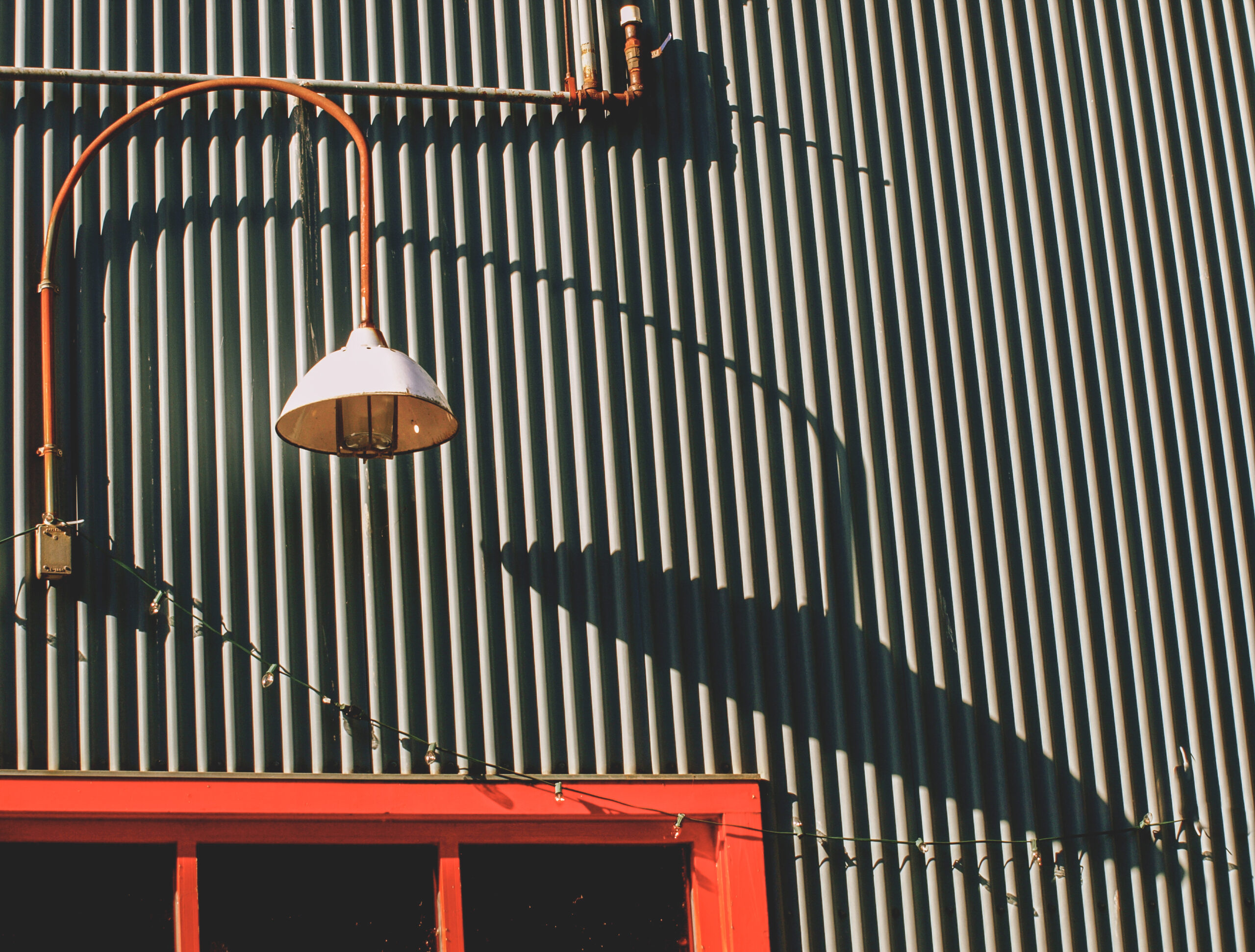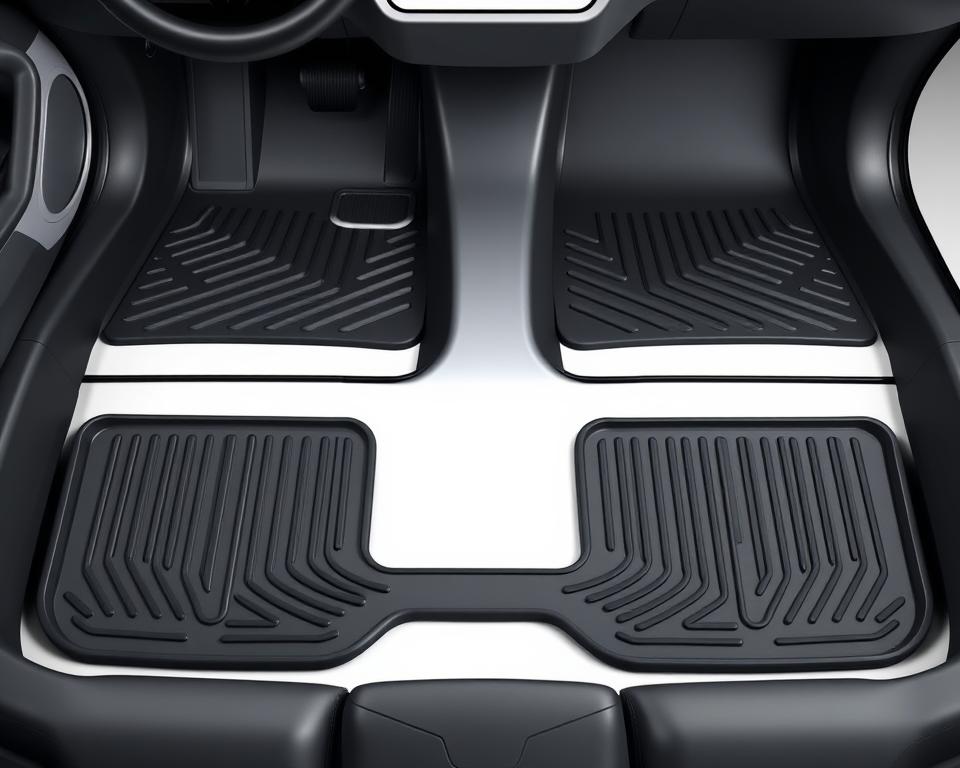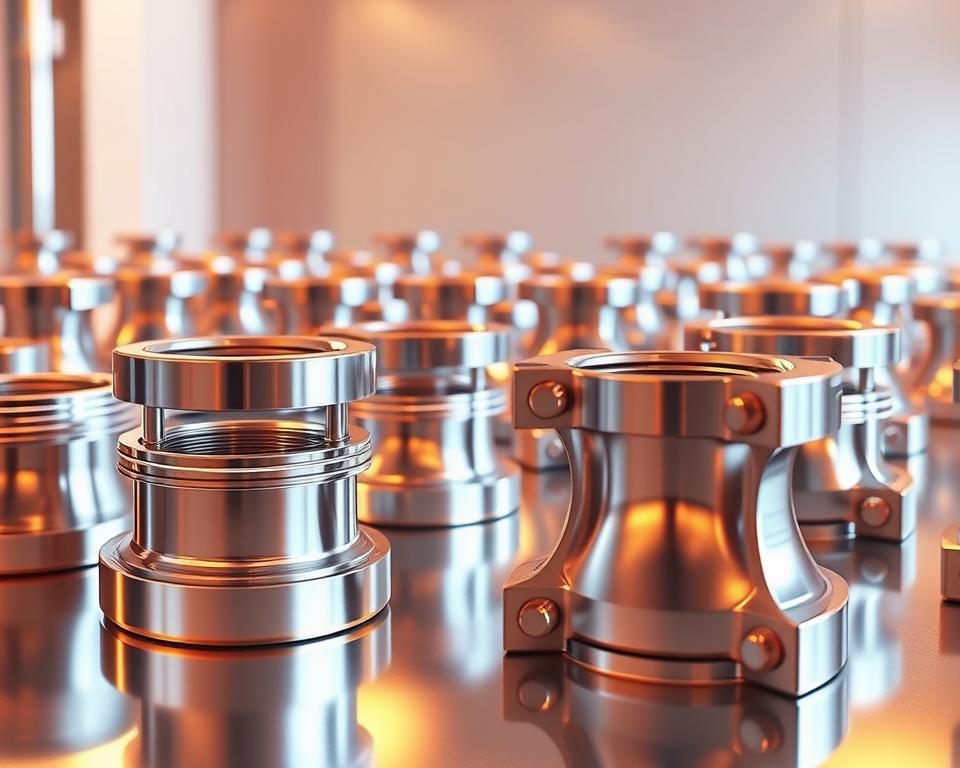Understanding Fiber Auxiliary Coating Systems
Did you know that more than 90% of worldwide internet data flow is based on optical fiber technology? This information emphasizes the importance of each component in fiber optic cable fabrication, particularly the optical fiber secondary coating system. These arrangements are essential for securing the fiber optic cables’ strength and performance.
This article will investigate the complexities of fiber secondary coating lines. We will analyze their crucial function in shielding optical fibers. Additionally, we will look into how these setups enhance fiber strength and effectiveness. This knowledge is vital for those working in Fiber coloring machine industry and manufacturing.
Overview of Optical Fiber Technology
Fiber optics has changed data transmission, using optical signals over electronic signals. This technique guarantees rapid data transfer with reduced attenuation. At the heart of this technology exist the foundations of fiber optic communications. These foundations are supported by a sophisticated design. It comprises a nucleus, coating, covering, reinforcing strands, and a shielding cover. Each element is vital for the technology’s functionality.
The technology’s integration into telecoms has transformed our data exchange system. It skillfully controls vast amounts of data, supporting web, phone services, and television systems. As a result, fiber technology not only enhances functionality but also provides consistency worldwide.
Exploring Fiber Secondary Coating Line
A fiber auxiliary coating system is a assembly of specialized equipment and procedures. It coats protective layers to fiber optics after manufacturing. This additional covering is crucial for the fibers’ durability and functionality. It protects them from environmental and mechanical risks. The critical role of layers in maintaining fiber optics’ integrity is obvious.
Meaning and Relevance in Fiber Optic Production
The secondary coating process is vital in optical fiber production. It includes covering the optical strands with a polymer layer. This coat shields the optics during installation and operation. It extends the longevity of optics by minimizing wear from flexing, abrasion, and pollutants.
Without these coverings, fibers would be vulnerable to splitting and performance issues. This process is vital for upholding the fibers’ integrity.
The Role of Coverings in Protecting Optical Fiber
Coverings are key in preserving the optical clarity and physical strength of fibers. They function as a defense against physical stress and external elements. The importance of coatings is clear; they improve the optical fiber strength. This ensures more efficient installation and a prolonged lifespan.
This focus on secondary coating is vital for those in fiber optic technology. It’s a element that substantially influences the optical fiber’s functionality and durability.
Components of Optical Fiber Auxiliary Coating Systems
The fiber secondary coating line is a complex system, including several critical parts. These components are crucial for producing high-quality products. They clarify how a optical fiber auxiliary system operates and what it needs to run efficiently.
Primary Tools Summary
Primary tools like optical fiber feeders, gel applicators, extruders, junction units, and cooling units constitute the heart of the secondary covering process. Each piece of equipment is crucial for the coating process. For instance, the extruder heats the covering substance, and the connection point applies it uniformly around the fiber. These components must operate in harmony to guarantee consistent manufacturing and product quality.
Raw Materials Used in Coating
The pick of materials for coating is critical for reaching the expected functionality. UV-set plastic materials are often preferred for their exceptional protective qualities. These substances shield the fiber, increase its longevity, and improve overall performance. The appropriate combination of raw materials ensures the end output meets industry standards and user needs.
Exploring the Auxiliary Covering Operation
The additional layering procedure is vital in the production of fiber strands, providing vital safeguarding to the freshly manufactured optics. This step involves the application of protective materials to boost the fiber strand’s strength and operation. The sequence of this procedure is vital; it ensures perfect bonding, thereby reducing excess and enhancing production efficiency.
Fabricators utilize various coating technologies, such as extrusion and gel layering, to adjust certain layering traits and coating dimensions. Each technique offers specific perks, ideal for diverse strand operations and demands. As the need for top-notch fiber strands escalates, improving the secondary coating process is paramount. It is critical for upholding sector norms and pushing covering innovations.
Role of the Draw Tower in Secondary Layering
The fiber draw tower is vital in the fabrication of fiber optics. It extracts strands from initial shapes while adding shielding layers as they cool. The quality of the draw tower is essential, affecting the layering’s success.
Operation of the Extraction Structure
The drawing system warms the initial shape before pulling the strand at a managed rate. This procedure is vital for upholding the fiber’s structural integrity. As the strand comes out, coverings are applied immediately for even defense against environmental and mechanical risks. The draw tower’s design guarantees ideal covering placement scheduling and attachment.
Link Between Drawing System and Layering Effectiveness
The draw tower’s quality has a direct effect on the coating’s final result. Variations in the drawing process can result in uneven coating thickness, influencing the fiber strand’s effectiveness. High-quality draw towers eliminate these issues. A consistent covering arrangement enhances fiber durability, making the fiber ribbone line more durable and functional in multiple settings.
Qualities of Top-Notch Secondary Layering
Top-tier coverings are crucial for the performance and consistency of fiber optic systems. They must adhere to stringent structural and optical guidelines to ensure communication clarity. This awareness aids producers in developing more dependable items.
Structural and Optical Quality Benchmarks
Additional layers need to display outstanding mechanical properties. They must withstand physical stress and uphold effectiveness across diverse environmental settings. This requires adhering well to the glass core and preventing contraction or stretching. Additionally, they should enhance light transmission, enabling high-speed data transfer with minimal signal loss.
Significance of Bonding and Durability Against Layer Separation
Adhesion of the coating to the glass core is essential for the network’s durability. Without robust attachment, the chance of coating detachment increases, likely resulting in failures. Top-tier coverings are engineered to prevent layer separation, providing durability and reliability across various uses. This durability not only prolongs the fiber strand’s longevity but also enhances effectiveness, emphasizing the significance of picking high-quality layering compounds.
Technology Behind Secondary Coating Lines
The evolution of auxiliary covering systems is motivated by the demand for productivity and high-quality items. In the optical fiber sector, the embracing of advanced covering tools is growing. These improvements feature real-time monitoring systems and enhanced extruder designs. Such technologies allow producers to uphold high-quality standards while streamlining production processes.
Innovations in Secondary Coating Line Equipment
Recent advancements in auxiliary covering systems have revolutionized fabrication potential. New polymer applicators now deliver exact management over the covering operation. This causes improved uniformity and functionality in the final product. Mechanization and advanced system combination further enable speedier fabrication operations with minimal manual input. This not only reduces mistakes but also improves total productivity.
Analysis of Secondary Layering Methods
Comparing different auxiliary covering systems is crucial. Flexible setups shine for their flexibility and growth potential. They enable fabricators to adjust to fluctuating production demands without significant infrastructure changes. In contrast, traditional setups are known for their consistency and established performance. The decision on method depends on a business’s unique demands, financial constraints, and production goals.
Benefits of Auxiliary Covering Systems
Secondary coating lines bring many perks to fabricators in the optical fiber sector. They enhance the production process, leading to greater cost efficiency and better quality outputs.
Financial Savings in Fabrication
Secondary layering processes are vital to reducing production costs. They cut down on wastage and optimize processes, leading to significant cost efficiency. This efficiency increases economic gains, making it essential for companies wanting to maintain an edge.
Better Item Strength and Lifespan
Secondary layering processes also enhance product quality. The durable coatings coated through these processes enhance the item strength of fiber optic cables. This leads to longer lifespan and dependability, providing improved effectiveness and customer happiness.
Uses of Auxiliary Covering Systems
Fiber secondary coating lines are crucial across multiple fields, providing the reliability and effectiveness of fiber optics. These optics are crucial in telecommunications, building the base for fast online connectivity. They facilitate effective information transfer, bridging users globally.
In the medical field, these fibers are vital for operational devices and testing machines. Their precision and strength are essential for healthcare uses. The implementations of secondary layering also reach into aerospace and defense, where they support data exchange processes and detection systems.
Electronics for consumers reap advantages from the increased resilience of these optics. They aid devices that operate under harsh conditions. The flexibility of these strands allows innovative solutions, making them vital in today’s contemporary technological environment.
Impact of Secondary Coating on Fiber Optic Performance
The secondary coating is vital for enhancing fiber optic performance, emphasizing optic resilience and light distortion. A expertly applied layer can greatly reduce minor optical fiber flaws that may result in breakage under pressure.
Influence of Layers on Optic Resilience
The optic resilience of optical fibers is vital for their consistency across various applications. Auxiliary coverings provide a defensive cover that mitigates pressure, lowering the likelihood of splitting. This protective layer ensures that fibers uphold their fiber durability under outside forces, providing steady effectiveness across their operational period.
Light Distortion Control and Its Significance
Microbending effects can distort light propagation within fiber strands, resulting in communication issues. Effective secondary coatings mitigate these bending issues, providing optics retain their optical properties even in challenging settings. By lowering minor bending issues, manufacturers can guarantee fiber optic cables provide top-notch functionality and strength across their operational period.
Industry Shifts and Developments in Auxiliary Covering
The optical fiber auxiliary covering industry is witnessing significant shifts, driven by the need for better performance and environmental responsibility. This evolution is fueled by the rapid expansion of data transfer, raising awareness of the significance of high-quality compounds and innovative coating processes. These shifts highlight the importance of embracing cutting-edge materials and methods in the coating industry.
Emerging Technologies in Coating Processes
Advancements in coating technology have caused the creation of novel polymer materials. These substances provide superior mechanical properties and sustainability. Such innovations not only bolster the durability of fiber optics but also minimize environmental harm. Furthermore, advanced fabrication processes provide greater accuracy in placement, resulting in steady item excellence.
Outlook for Auxiliary Covering Systems
The forecast for secondary layering processes is anticipated to include the integration of automation and intelligent tools. These advancements are projected to optimize fabrication, cutting down on expenditures and enhancing product quality. As the market develops, the emphasis will stay on innovation and discovery. This will fuel additional developments focused on satisfying the need for fast information exchange and sustainability.
Challenges Faced in Fiber Optic Coating
The production of optical fiber coverings faces numerous challenges that affect fabrication effectiveness and item excellence. A significant challenge is the obstacle in achieving even layer dimensions across different optic strands. Such variations can lead to covering challenges, affecting the fibers’ overall performance and dependability.
Maintaining firm attachment between the layer and the strand is another major hurdle. Insufficient attachment can cause the covering to malfunction quickly, either during application or later on. Furthermore, pollutants in the covering procedure present major production obstacles. These pollutants can damage the layer’s effectiveness and functionality. Manufacturers must handle following rigid green standards with innovations in production to overcome these hurdles.
Resolving these issues is essential to satisfy the increasing industry needs. It sets the stage for enhanced strength and dependability in fiber strand operations.
Recap of Auxiliary Covering Systems
The summary of optical fiber auxiliary covering systems underscores their crucial role in creating dependable and superior fiber optics. These setups not only enhance the structural and optical qualities of optics but also shield them from environmental threats. This ensures the optics maintain their integrity over their lifespan.
Advancements in technology have taken the benefits of FTTH cable production line to new heights. They enhance production efficiency, minimize material loss, and cause better output standards. The advancements facilitate firmer attachment and resistance to issues like delamination, which crucially affects performance.
Understanding the importance of secondary layering processes helps those involved in the optical fiber industry make educated decisions. This knowledge leads to better output standards and manufacturing productivity. Such advancements are vital in today’s competitive market.
Common Inquiries
What is a fiber secondary coating line?
A fiber auxiliary covering system is a setup meant to coat with defensive layers to fiber optics. This procedure takes place post-extraction, guaranteeing the optics’ strength and functionality.
Why is the secondary coating process important in fiber optic manufacturing?
The auxiliary covering operation is essential. It defends the optics from mechanical and environmental risks. This increases their lifespan and dependability, while upholding their visual characteristics.
Key elements of an auxiliary covering system?
Essential parts include fiber pay-offs, gel applicators, extruders, junction units, and cooling units. These components function seamlessly to apply protective coatings to fiber strands.
Common substances in auxiliary covering?
Typically selected compounds are UV-set plastic materials. These offer a shielding coat against harm from flexing, scratching, and pollutants.
How does the fiber draw tower contribute to the coating process?
The fiber strand extraction system manages the extraction of optics from starting material and adds shielding layers as they solidify. This significantly influences the coating quality.
Physical strength and light transmission guidelines for auxiliary coverings?
Auxiliary coverings must bond strongly to the fiber’s core, resist delamination, and endure mechanical pressure. This increases the fiber durability and visual transparency of the fiber optic cables.
Innovative techniques in auxiliary covering systems?
Innovative techniques consist of cutting-edge coating machines and real-time monitoring for quality assurance. These innovations enhance coating performance and fabrication effectiveness.
What advantages do secondary coating lines offer manufacturers?
Secondary coating lines cause financial savings in fabrication, better output standards, minimal wastage, and enhanced longevity and effectiveness of fiber optic cables.
Applications of auxiliary covering systems in various sectors?
These lines are employed in communication networks, clinical, space exploration, and consumer electronics. They provide reliable fibers for high-speed internet services and data centers.
How do secondary coatings impact the tensile strength of optical fibers?
Auxiliary coverings shield small defects and mitigate microbending effects. This provides the fiber strands preserve their visual properties and perform consistently under different environments.
Obstacles in auxiliary covering production?
Producers experience hurdles like maintaining coating thickness consistency, ensuring proper adhesion, avoiding pollutants, and following green regulations while driving progress.
Upcoming developments in auxiliary covering industry?
The sector is projected to experience more robotics, intelligent tool adoption, and improvements in synthetic substances. These should boost green practices and covering efficiency.



